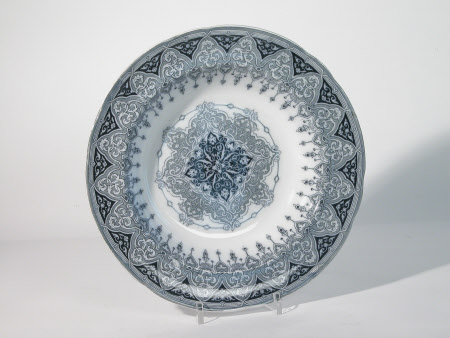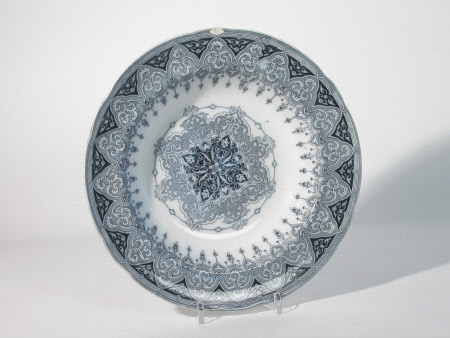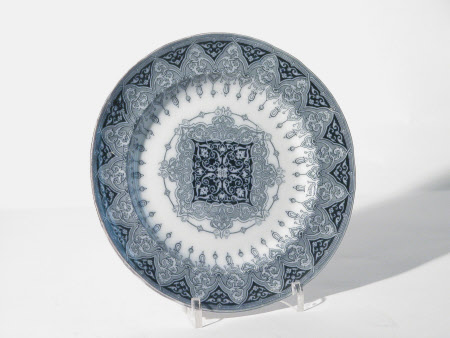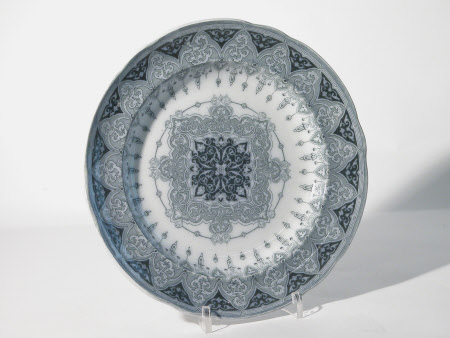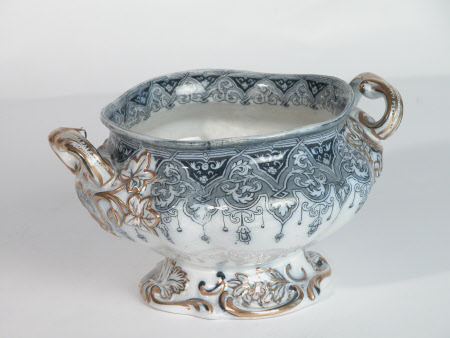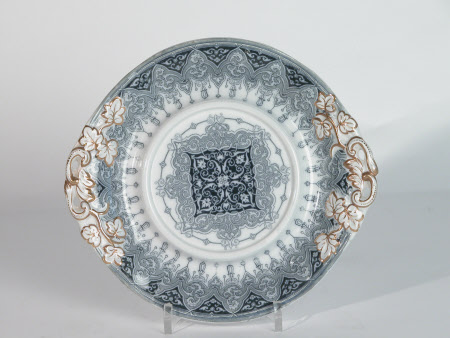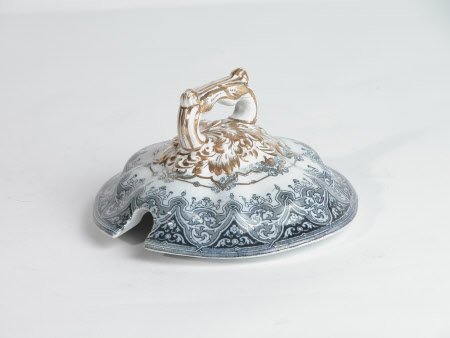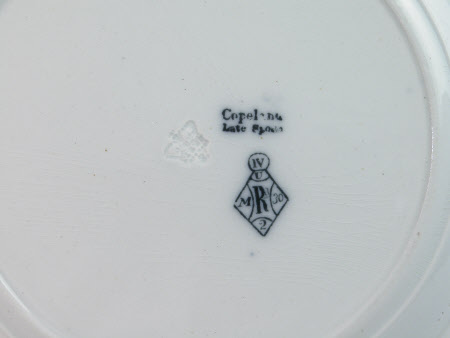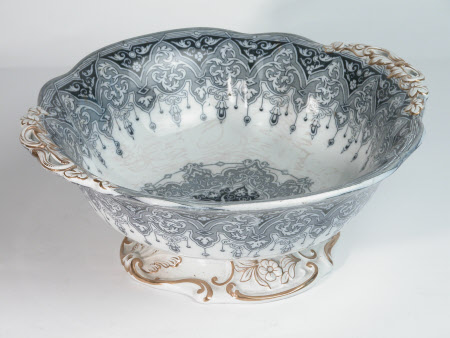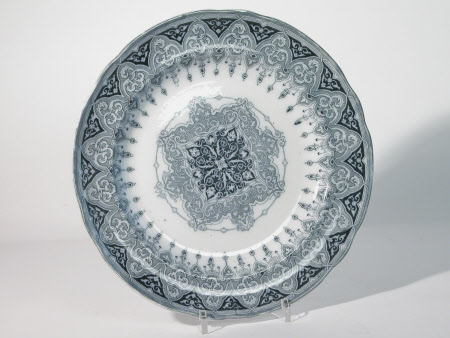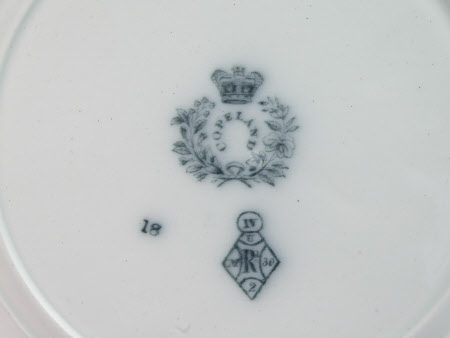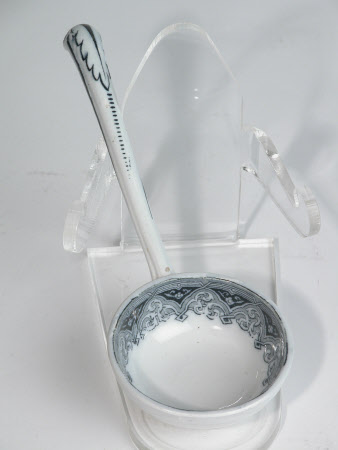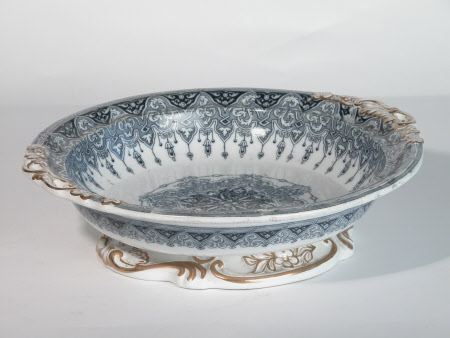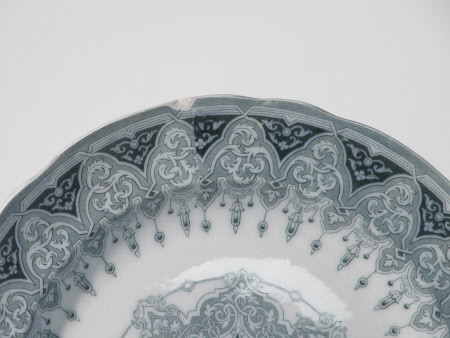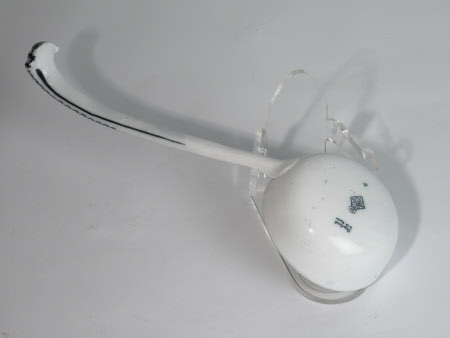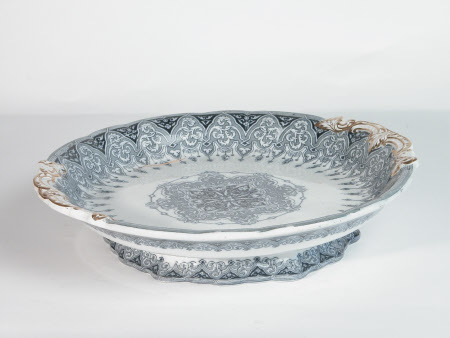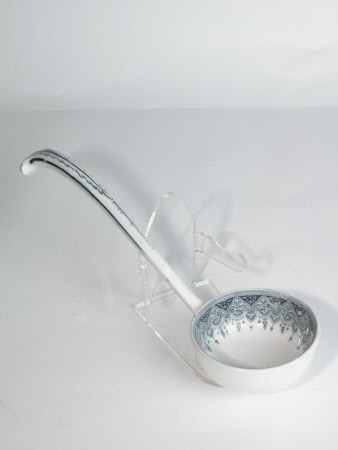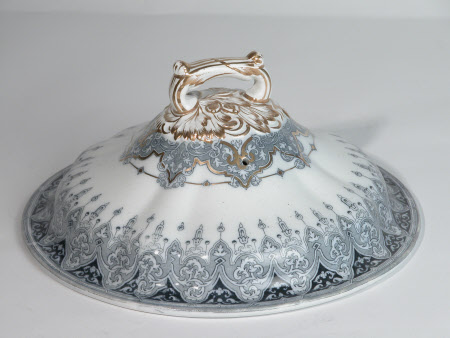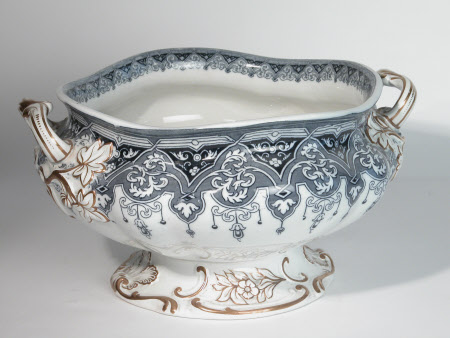Table service
Copeland
Category
Ceramics
Date
1848 - 1850
Materials
Earthenware
Place of origin
Stoke-on-Trent
Order this imageCollection
Saltram, Devon
NT 871078
Summary
Part dinner service, earthenware, transfer-printed in shades of blue, and gilded, decorated with the 'Alhambra' pattern made by W.T. Copeland (Spode's factory), Stoke, Staffordshire, about 1848. Makers marks on the reverse: in underglaze blue, 'Copeland Late Spode' with an impressed Crown. Design Registration mark: underglaze blue, kite-shaped mark, for 30 June 1848, parcel 2.
Full description
This dinner service was made by the Copeland factory, Stoke-on-Trent and decorated in a pattern called 'Alhambra', named after the 13th-century, Nasrid palace in Granada, Spain. In the early 19th century, when this dinner service was made, the Alhambra became famous in Britain, America and Europe as a popular tourist destination inspiring Washington Irving's collection of essays 'Tales of the Alhambra' (1832) and featuring in Owen Jones's design guide 'The Grammar of Ornament' (1856). The additional gilding and fashionable Islamic inspired decoration on these pieces made them suitable for use on a middle-class dining table. Later in the 19th century, these types of services were often relegated to servants areas as they fell out of fashion. The blue decoration was achieved by transfer-printing, a way of reproducing two-dimensional designs on ceramics, which results in high-quality decoration at a low cost per unit. The design is printed onto a sheet of tissue paper by means of which it is then transferred onto the surface of the ware. Transfer-printing transformed the British market in the 19th century for brightly decorated, cheap earthenwares of many shapes and sizes. W.T. Copeland took over the partnership of Copeland and Garrett in 1847, a company that succeeded the original Spode factory in Stoke (Stoke-on-Trent), Staffordshire. Josiah Spode I was the first potter to commercially produce underglaze blue printed earthenware introduced in about 1784-85, and the technique remained a mainstay of the Spode factory's production right through to its closure in 2009.
Provenance
Private donation to NT Saltram in 1969.
Makers and roles
Copeland, maker
